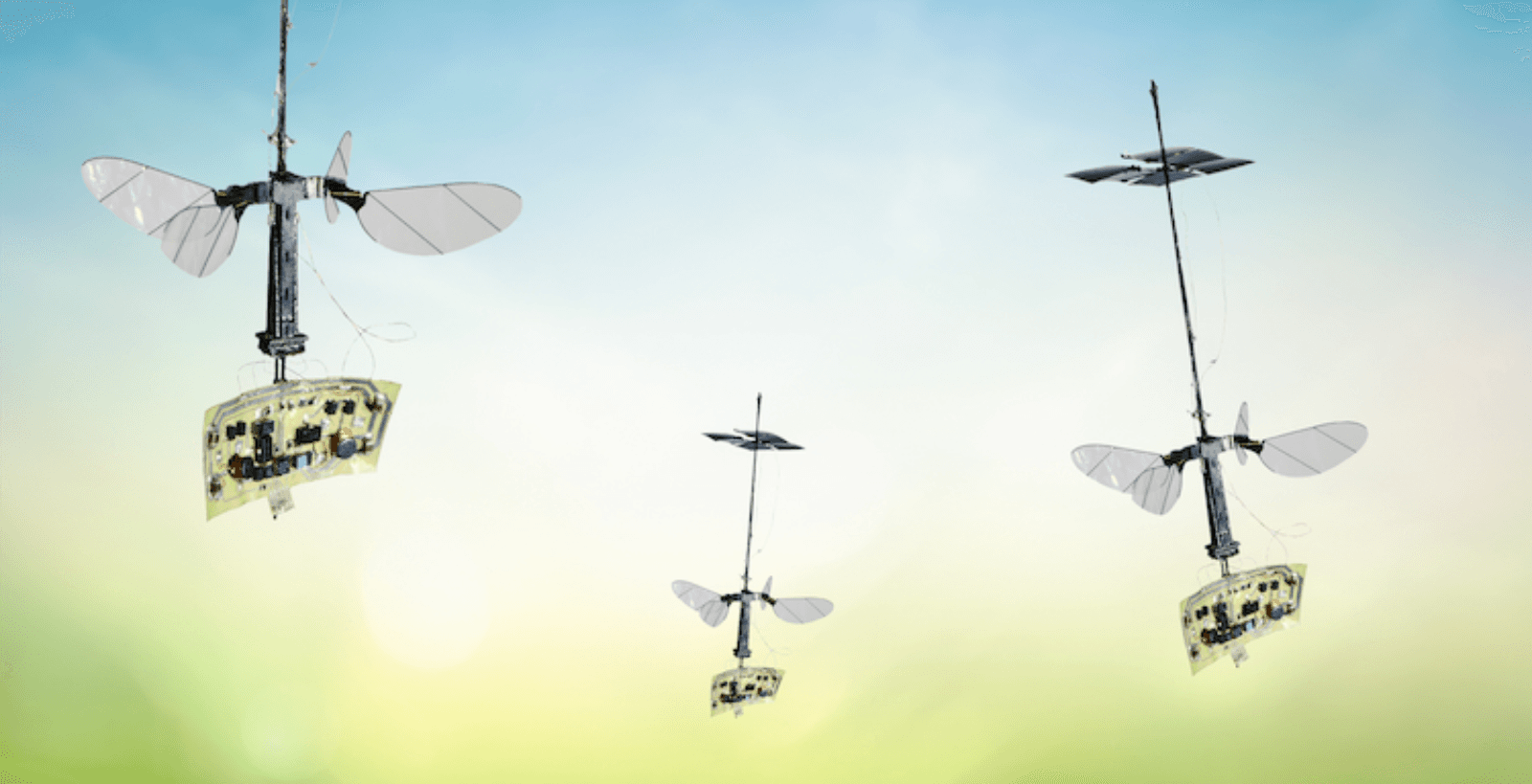Flight of the Robobee
by Alan S. Brown
Solar power, quantum computers, superconductors, and smart crop irrigation systems

The Author
Solar power has taken enormous strides over the past decade, but there is still plenty of room for growth. At Harvard's Kavli Institute for Bionano Science & Technology, for example, Robot Wood is using solar cells to power the world's lightest untethered drone, a robobee with four flapping wings that weighs about as much as one-fourth of a paper clip. Even more surprising, Kavli Energy NanoScience Institute at Berkeley's Eli Yablonovitch has developed a way to harness solar light and heat to produce solar cells that are 50 percent efficient — enough to power a drone for days at a time. This month also updates research on quantum computers, superconductors, and smart crop irrigation systems.
Robert Wood, a member of the Harvard University's Kavli Institute for Bionano Science & Technology, has created the lightest untethered drone to ever take flight. It weighs about one-quarter as much as a paper clip, and while it cannot stay aloft for long now, researchers believe they know how to keep it airborne for minutes at a time. The robot has been under development for a decade. In the past, Wood's team powered the robobees by attaching a thin cord to a large battery. The new robobee uses solar cells to generate power. It also uses four flapping wings instead of two, a more efficient control system, and mechanical improvements in the transmission to improve its flight.

Imagine a power source that can keep a drone flying for days at a time. That's the promise of a new technology developed by Eli Yablonovitch, a member of the Kavli Energy NanoScience Institute at Berkeley. Yablonovitch specializes in thermophotovoltaic energy, which captures solar electricity from the sun and turns the heat produced by photons that pass through the solar cell layer to generate more electricity. Efficiency has been stuck at 23 percent for 15 years. Then Yablonovitch's lab came up with a way to boost heat capture by using a series of mirrors. These reflect hot photons back at incoming photons, boosting their energy and potential to make electricity. So far, he has boosted thermophotovoltaic efficiency to 29 percent and expects to get to 50 percent in the near future. That could be enough to leave a drone running for days, or power deep space probes for centuries.
Every year, more than 70 percent of all fresh, drinkable water goes into agricultural irrigation. A lot of that is wasted. Abraham Stroock, a researcher at the Kavli Institute at Cornell for Nanoscale Science, is working on a way to reduce unnecessary water use. This starts with Stroock's nanostructured sensors, which can tell when plants need water. These are linked to a machine learning system that looks at weather forecasts and balances the likelihood of rain with the uncertainty of how much water will be lost to the atmosphere from leaves and soil. The tested the technique on grass crops in Iowa and found that their predictive controls used considerably less water than other methods.
No wonder superconductors have intrigued physicists for more than 100 years: A current sent through an ordinary wire ring will lose energy as it travels, but will continue to circulate in a superconducting ring forever. Scientists would like to know why, so they could apply those principles to create everything from super-efficient electrical grids to quantum computers. Now, a research team from the laboratory of Feng Wang, a member of the Kavli Energy NanoScience Institute at Berkeley, has found a way to study superconductors in a most unexpected way. He starts with a Mott insulator — a material that should conduct electricity at cold temperatures but instead becomes an insulator — into in a superconductor by adding or removing current. This lets them study what makes materials superconducting and also provides a way to use them in quantum computers.
Quantum computers store information in a single photon or electron. Unfortunately, that presents a major challenge — reading the weak and fleeting quantum state of that particle before it disappears. While researchers can read one electron, they have stalled on coming up with a way to read the multiple electrons necessary to create a quantum computer. At TU Delft's Kavli Institute of Nanoscience, Lieven Vandersypen's research team has taken a big step towards resolving this problem. They have boosted the time it takes to read an electron — or more than one electron — by 100 times. They did it by designing a silicon chip that holds the electron and a measurement device. They still need to speed up the device for commercial use, but it represents a new and powerful way to make larger quantum computers.

Photo by an optical microscope of the quantum chip connected to a circuit board.